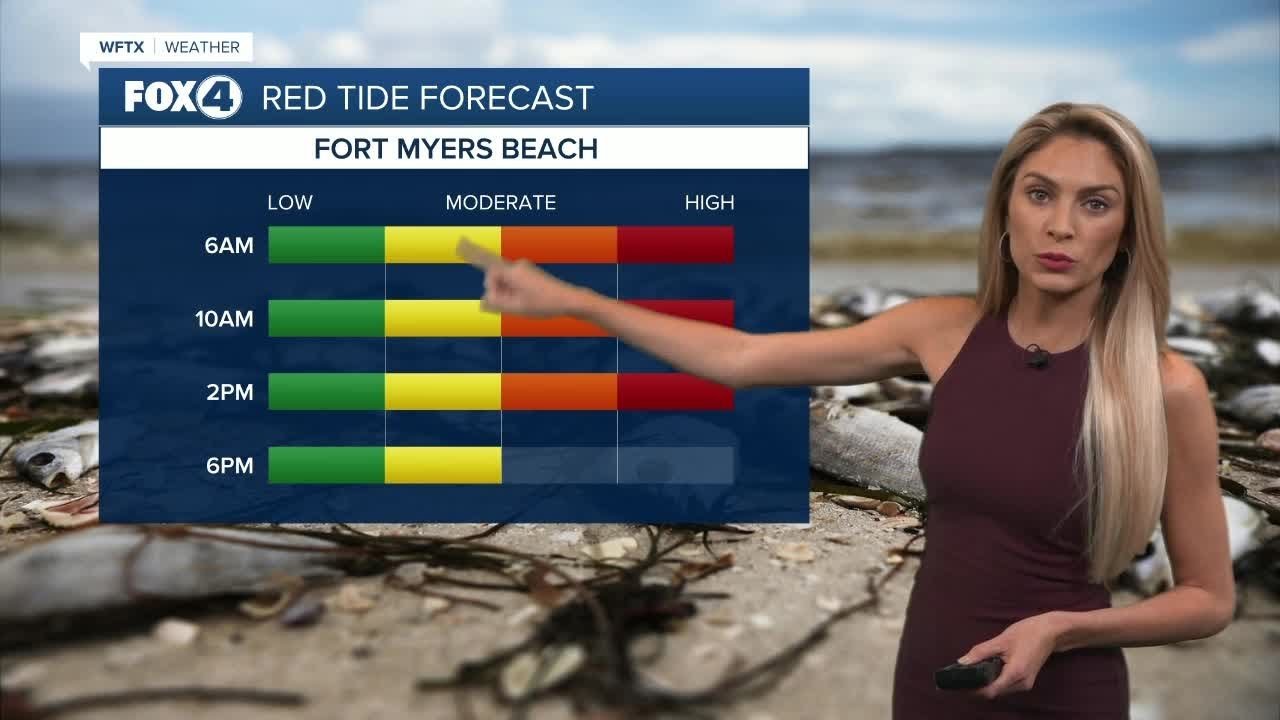This article explores the phenomenon of red tide and its impact on Southwest Florida’s coast. Red tide refers to the sudden increase in the concentration of microscopic algae in the ocean that causes discoloration of water and harm to marine life. The article highlights the efforts of scientists and researchers to track red tide using technological tools and other methods to help predict and mitigate its effects. The importance of understanding and monitoring red tide is crucial for the wellbeing of the region’s ecology and economy.
Tracking Red Tide Along Southwest Florida’s Coast
Southwest Florida is home to some of the most beautiful beaches in the world. However, during certain times of the year, these beaches may be affected by a phenomenon known as red tide. Red tide is a harmful algal bloom that can cause respiratory irritation, fish kills, and other negative impacts. Therefore, it is essential to track red tide to protect public health and the environment.
What is Red Tide?
Red tide is a naturally occurring phenomenon caused by the overgrowth of a type of algae called Karenia brevis. This algae produces a toxin called brevetoxin, which affects the nervous system of fish, mammals, and humans. Red tide can discolor the water, giving it a reddish or brownish hue, and it can also cause respiratory irritation, especially for people with asthma or other respiratory conditions.
Tracking Red Tide in Southwest Florida
To track red tide in Southwest Florida, scientists and researchers use a variety of tools and techniques. Here are some of the most common methods used:
1. Satellite Imagery
Satellite imagery can detect the presence and movement of red tide. This technique is used by the National Oceanic and Atmospheric Administration (NOAA) and other agencies to monitor red tide in the Gulf of Mexico.
2. Water Sampling
Water sampling is another method used to track red tide. Scientists collect water samples and test them for the presence of Karenia brevis and brevetoxin. This technique is used by the Florida Fish and Wildlife Conservation Commission (FWC) and other agencies to determine the concentration of red tide in a particular location.
3. Reports from Beachgoers
Reports from beachgoers can also be helpful in tracking red tide. The FWC encourages people to report respiratory irritation, fish kills, and other red tide-related incidents on their website.
4. Real-time Beach Conditions
Several websites and apps provide real-time beach conditions, including the presence of red tide. These tools can be helpful for people planning to visit the beach but want to avoid red tide-affected areas.
Why Track Red Tide?
Tracking red tide is essential to protect public health and the environment. If red tide concentrations are high, beachgoers may experience respiratory irritation and other health problems. Fish and other marine life can also be affected, leading to fish kills and other negative impacts. Therefore, tracking red tide can help people avoid affected areas and minimize the risk of exposure.
In addition to the health impacts, red tide can also have economic consequences. Tourists may avoid visiting the area if red tide concentrations are high, leading to a decrease in tourism revenue. Therefore, tracking red tide can also help local businesses plan for potential disruptions.
What Can We Do to Help?
Although tracking red tide is primarily the responsibility of scientists and researchers, there are some things that we can do to help. Here are some tips:
1. Report Red Tide-related Incidents
If you experience respiratory irritation, see fish kills, or notice other red tide-related incidents, report them to the FWC. Your report can help scientists and researchers track red tide and better understand its impacts.
2. Check Real-time Beach Conditions
Before visiting the beach, check real-time beach conditions to see if there are any red tide advisories or warnings. If there are, consider visiting a different beach or postponing your trip.
3. Be Prepared
If you plan to visit the beach during red tide season, be prepared. Bring a face mask to protect yourself from respiratory irritation, and avoid touching dead fish or other marine life.
Tracking red tide is crucial to protect public health and the environment in Southwest Florida. By using satellite imagery, water sampling, and other techniques, scientists and researchers can monitor red tide and inform the public about potential risks. As beachgoers, we can also help by reporting red tide-related incidents, checking real-time beach conditions, and being prepared for potential disruptions. By working together, we can minimize the negative impacts of red tide and continue to enjoy the beautiful beaches of Southwest Florida.
HTML Headings:
Tracking Red Tide Along Southwest Florida’s Coast
What is Red Tide?
Tracking Red Tide in Southwest Florida
- Satellite Imagery
- Water Sampling
- Reports from Beachgoers
- Real-time Beach Conditions
Why Track Red Tide?
What Can We Do to Help?
- Report Red Tide-related Incidents
- Check Real-time Beach Conditions
- Be Prepared




































